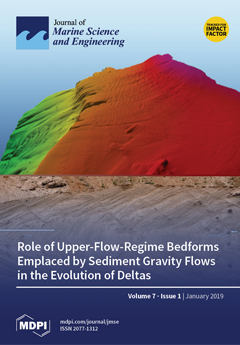In order to design reliable coastal structures, for present and future scenarios, universal and precise damage assessment methods are required. This study addresses this need, and presents improved damage characterization methods for coastal structures with rock armored slopes. The data used in this
[...] Read more.
In order to design reliable coastal structures, for present and future scenarios, universal and precise damage assessment methods are required. This study addresses this need, and presents improved damage characterization methods for coastal structures with rock armored slopes. The data used in this study were obtained from a test campaign carried out at Deltares within the European Union (EU) Hydralab+ framework. During these tests, advanced measuring techniques (digital stereo photography) were used, which are able to survey the full extension of the structure and identify local variations of damage. The damage characterization method proposed here is based on three fundamental aspects: clear damage concepts, precise damage parameters, and high resolution measuring techniques. Regarding damage concepts, first, the importance of the characterization width is studied. For damage parameters obtained from the maximum erosion depth observed in a given width (E
3D,m), the measured damage increases continuously with increased characterization width. However, for damage parameters obtained from width-averaged profiles (S and E
2D), the measured damage reduces with increased characterization width. Second, a new definition of damage limits (damage initiation, intermediate damage, and failure) is presented and calibrated. Regarding the damage parameters, the parameter E
3D,5, which describes the maximum erosion depth within the characterization width, is recommended as a robust damage parameter for conventional and non-conventional configurations based on four main characteristics: its low bias, its low random error, the ability to distinguish damage levels, and its validity and suitability for all types of structures (conventional and non-conventional). In addition, the results from this study show that the damage measured with the damage parameter E
3D,5 presents an extreme value distribution.
Full article





